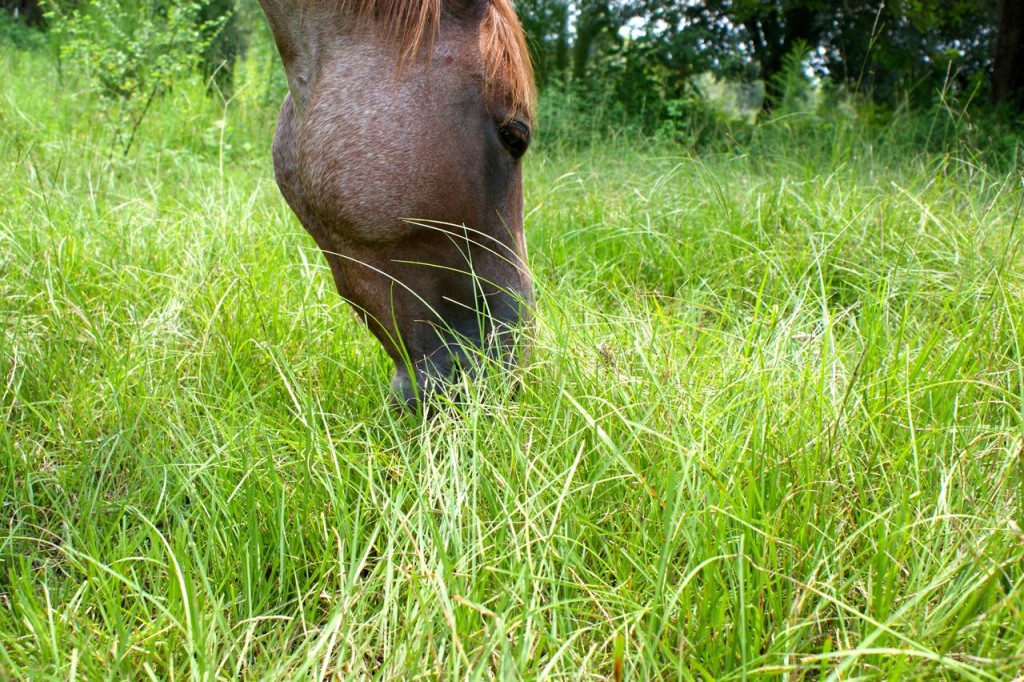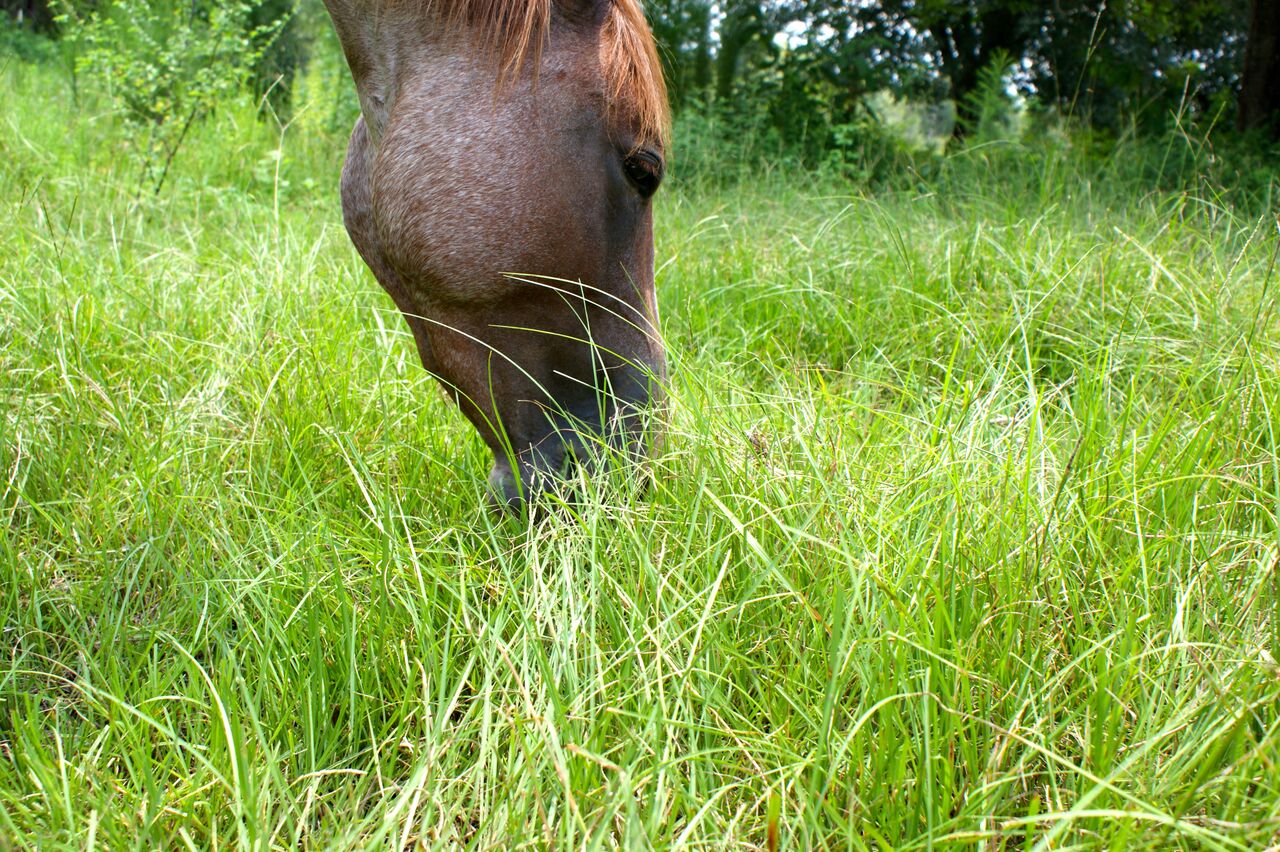Keep Your Horse Healthy All Summer Long

Summer has arrived, bringing with it the changing responsibilities of a horse owner. This may include changing out troughs more often to keep your horse’s water cool and fresh, or hosing him down on those brutal July afternoons to bring a bit of relief. What you might not do is think about the hidden dangers of summer grass.
Most horse owners believe their horses are only at risk for laminitis during the spring and early summer when grass growth is most intense. The truth, however, is that we need to remain vigilant throughout the summer as sugar content in the grass changes with the weather. All horses, but particularly those with metabolic issues, are susceptible to fructans, a type of sugar, in the grass. If these sugars pass into the hind gut before they’re digested, they can kick off a process that will cause laminae to fail. This leads to a laminitic attack. Metabolic horses also have a difficult time using glucose, or sugar, as fuel and instead store excess sugar as fat. Horses with metabolic, laminitic or obesity issues will get progressively worse over the course of the summer. To keep your horse safe and healthy on summer grass, consider the following suggestions:
Don’t overgraze. Most horse owners don’t realize that the greatest concentration of sugar in grass lies in the three inches closest to the ground. If you allow your horse to overgraze, he’s getting way more than his fair share of sugar. Tall, course grass is less rich, so your horse can safely eat much more (be mindful as he also gets more with each bite).

Grab a muzzle. Muzzles allow a horse to behave normally in the pasture in terms of exercise and socialization without running the risk of over-grazing. I recommend a state-of-the art muzzle available from Harmany Equine that is totally customizable. It can be molded to a horse’s head shape to determine how much, or how little, grass is available to the horse. The muzzle is made of a medical grade plastic with Kevlar® fibers, making it much lighter than other available muzzles without sacrificing durability.
Watch the weather. Though most bouts of laminitis happen in spring and early summer when grass growth is intense, the weather plays a large role in the sugar content of the grass. Keep these things in mind:
- Typically, your horse is safest with the standard hot, dry weather that’s common in the mid-late summer months.
- Grass that’s stressed (either overgrazed or in a drought) will be high in sugar.
- Rain leads to rapid plant growth (and increased sugar content), particularly after a drought.
- Unseasonably cool temperatures (either a dip in the evening or several days of much below-average temperatures) will increase sugar content in grass plants.
Strategize turnout. On a typical summer day, fructan levels in the grass peak in the sunniest part of the day (usually around noon), slowly declining throughout the evening, and hitting the lowest point in the late evening/early morning hours. If you want to maximize your horse’s healthy grazing, let him out to graze just before you head to bed then bring him back in early in the morning.
Assess your horse. If you see your horse multiple times daily, you’re much less likely to notice unhealthy changes in his body until it’s too late. Consider using a weight tape every 10 to 14 days to ensure he remains at a healthy weight. If he’s gaining, adjust your grazing plan accordingly. It’s also a good idea to feel his fat pads (neck crest, croup, ribs, etc.) weekly. If the texture of the fat changes from soft and pliable to hard and lumpy, he needs to lose weight.
By remaining aware of your horse’s condition, watching the weather and developing a strategy, your horse can safely enjoy summer grazing.
Dr. Joyce Harman opened Harmany Equine Clinic, Ltd in1990, bringing holistic healing to horses from all walks of life. Over the years, Dr. Joyce Harman has observed and adapted to the changing needs in the industry. Twenty-plus years ago, no one had heard of Lyme disease or insulin resistance, yet today those issues make up a large part of her clinical practice. Learn more at harmanyequine.com.
Published in August 2015 Issue

The Colorado Horse Source is an independently owned and operated print and online magazine for horse owners and enthusiasts of all breeds and disciplines in Colorado and surrounding area. Our contemporary editorial columns are predominantly written by experts in the region, covering the care, training, keeping and enjoyment of horses, with an eye to the specific concerns in our region.

